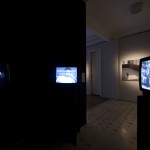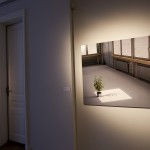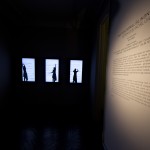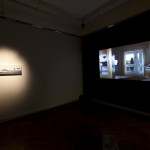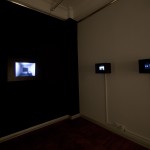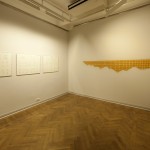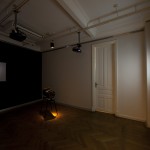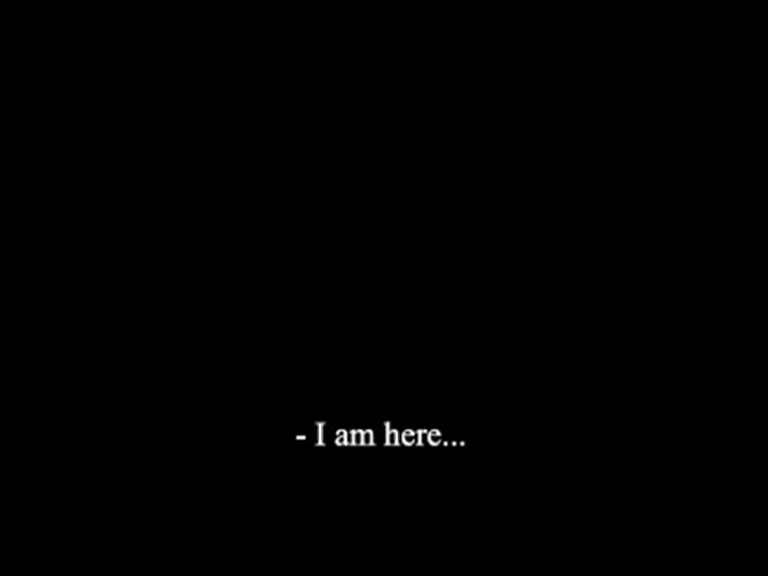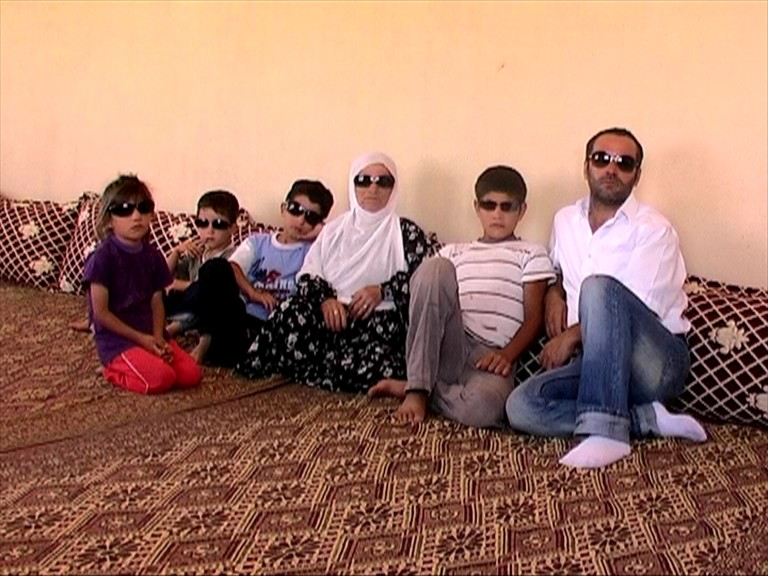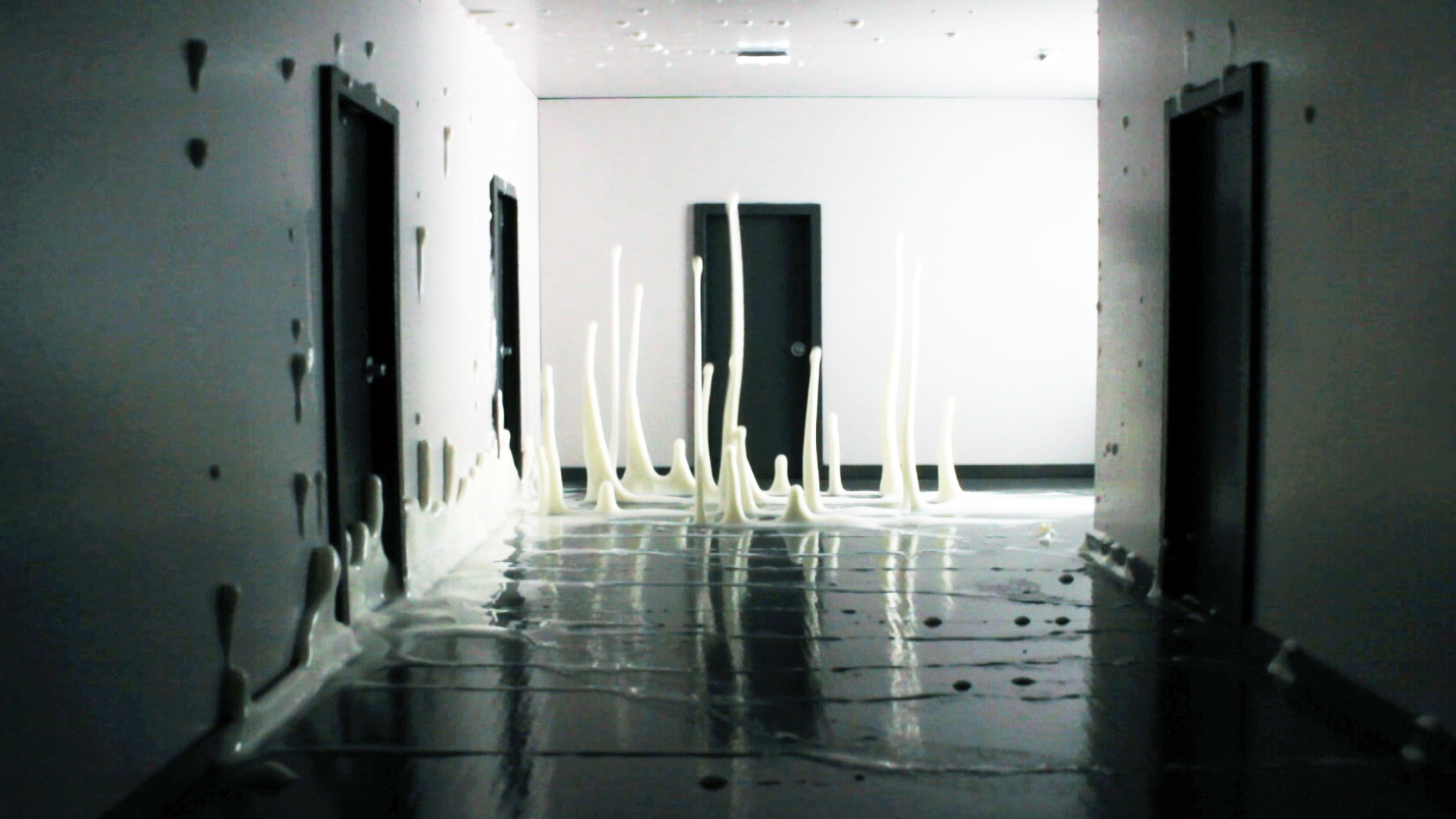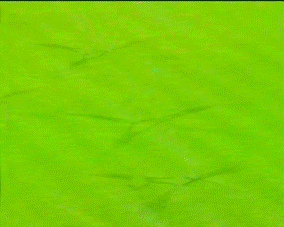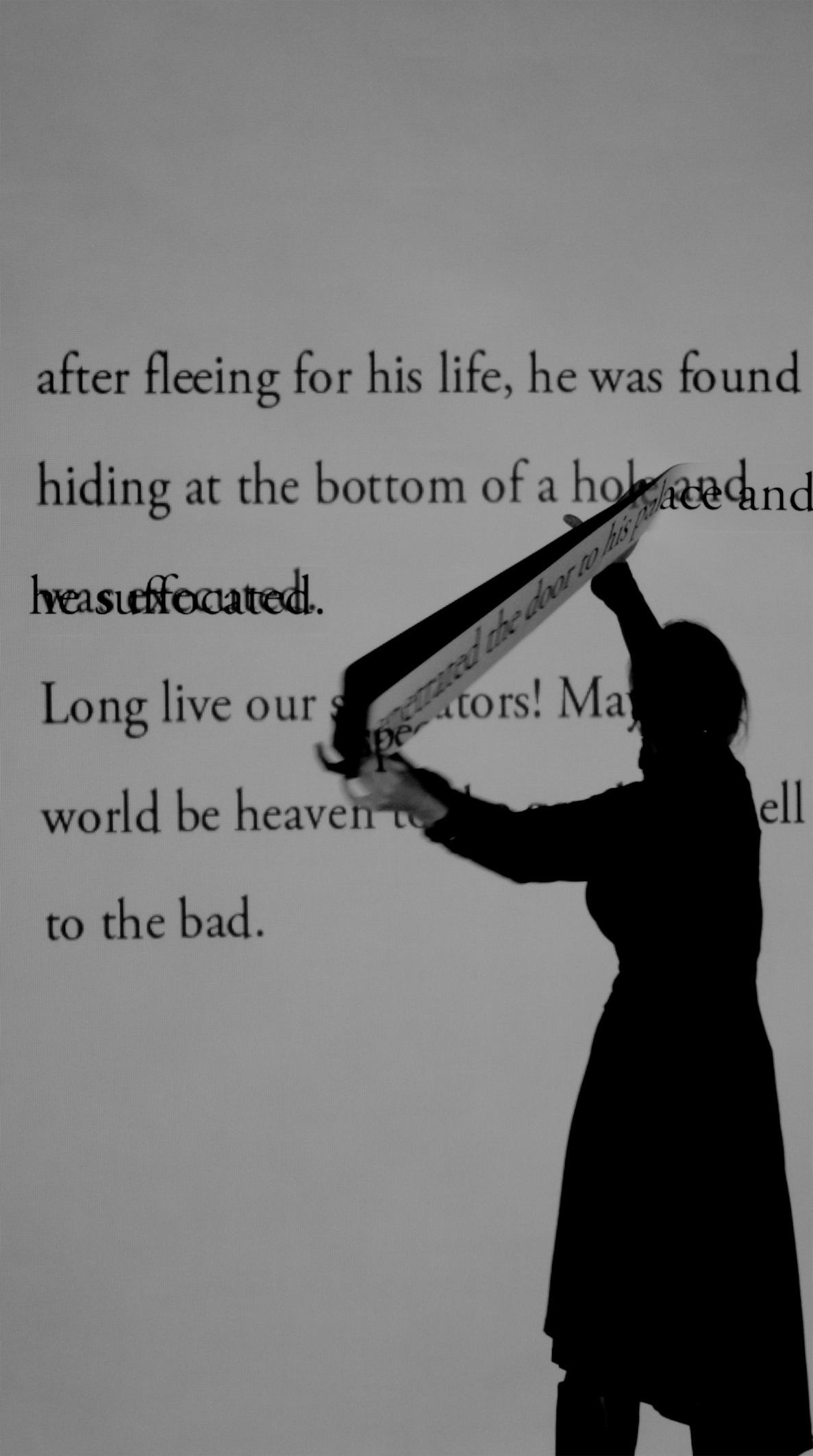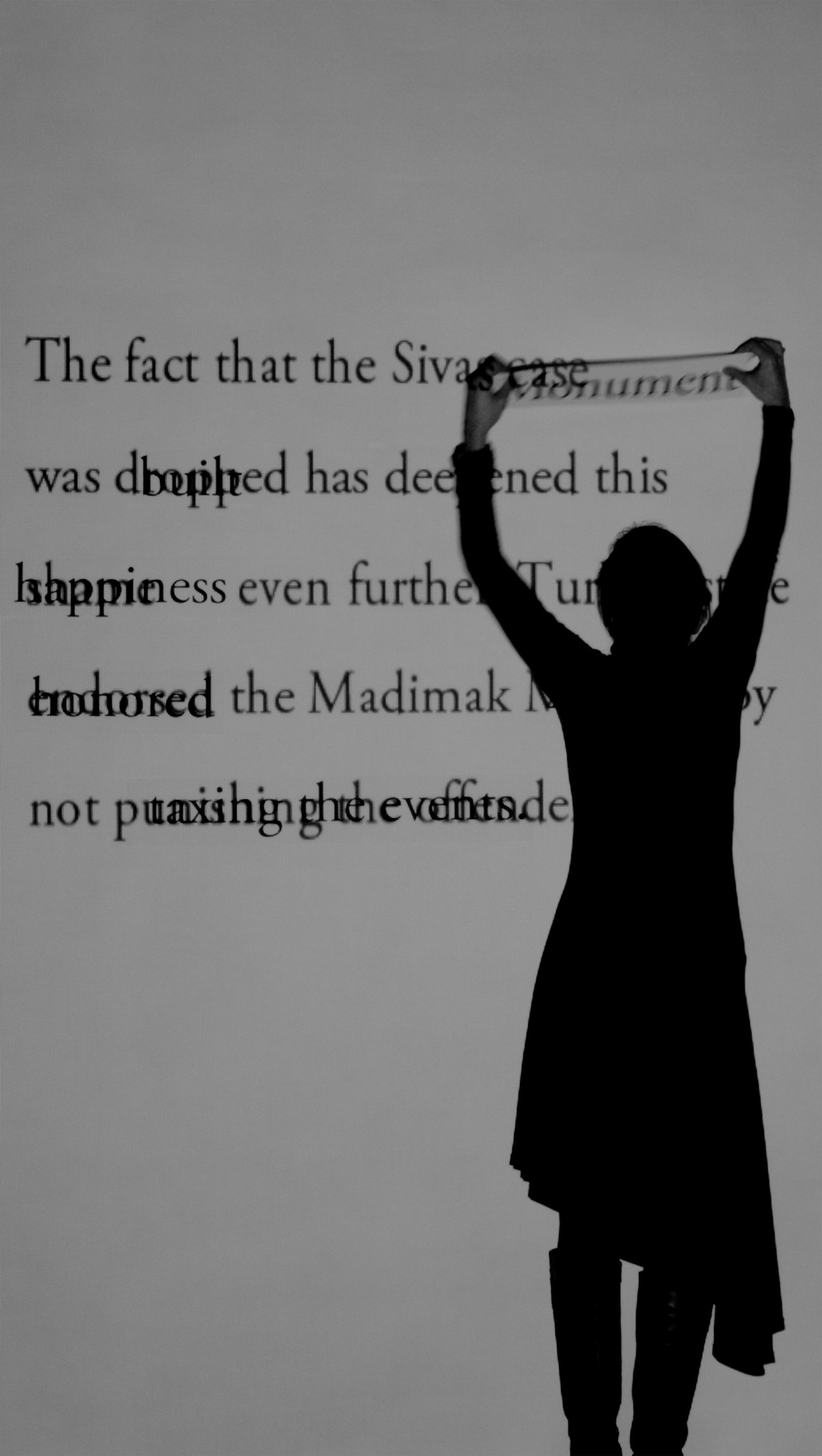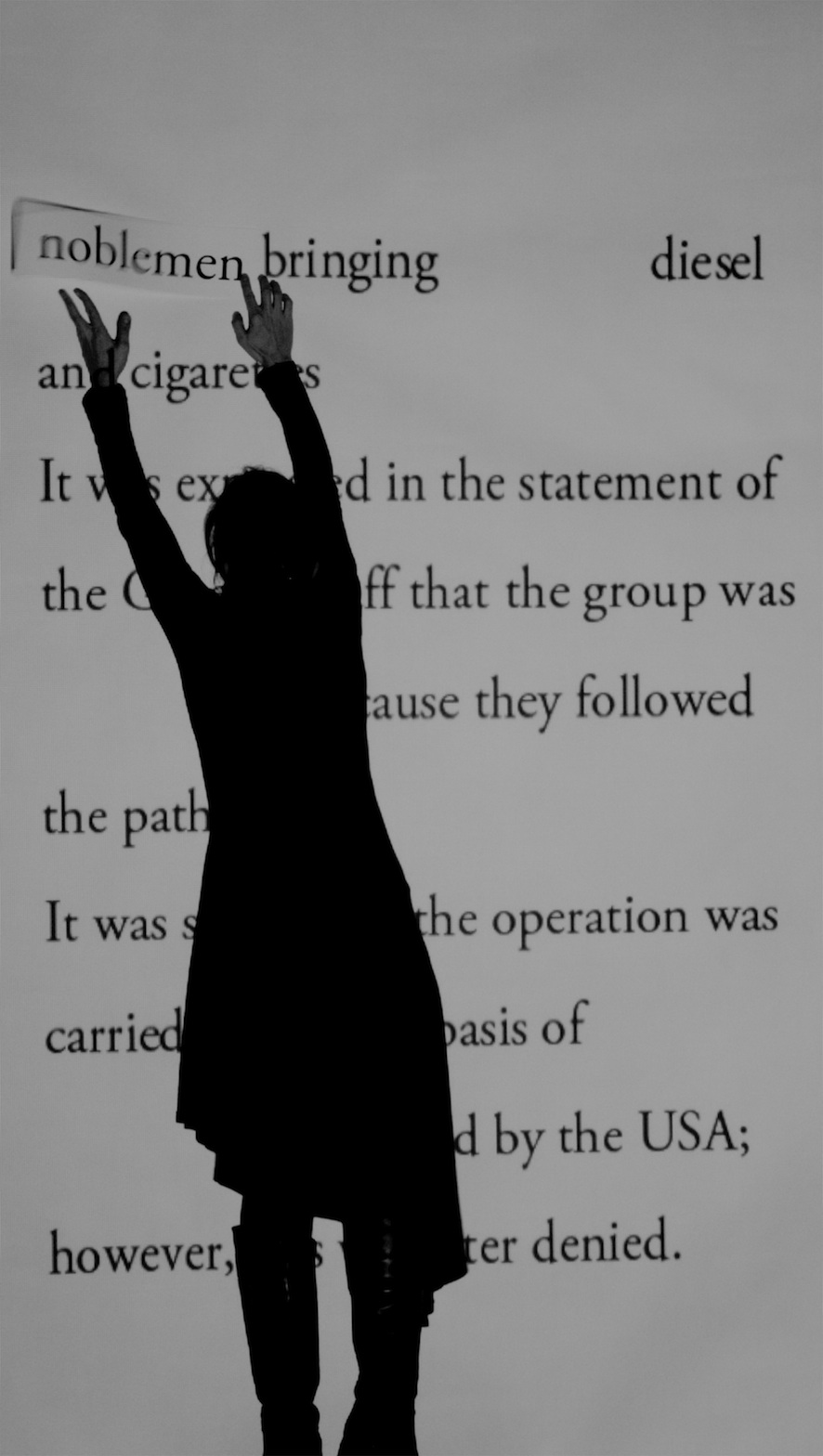INATTENTIONAL BLINDNESS
10 JANUARY- 22 FEBRUARY, 2014
INATTENTIONAL BLINDNESS
GALERI ZILBERMAN
website of the event
Participating Artists:
Sophie Dvořák | Sakir Gökcebag | Berat Işik | Claudia Larcher | Bernd Oppl | Liddy Scheffknecht | Aylin Tekiner
Curator:
Isin Önol
In science the theories are always being reassessed and confronted with new facts; if the facts are seriously discordant –beyond the error bars- the theory may have to be revised. But in everyday life it is very rare that we are confronted with facts about events of long ago. Our memories are almost never challenged. They can, instead, be frozen in place, no matter how flawed they are, or become a work in continual artistic revision.[1]
Inattentional blindness is a phenomenon known as “the failure to notice an unexpected stimulus that is in one’s field of vision when other attention-demanding tasks are being performed.”[2] This phenomenon is classified as a psychological attentional error and is not the result of visionary deficits. The main reason for this lacking of attention is the overload of stimuli surrounding us; in order to be able to focus on the intended things, we learn to disregard many others and be unaware of the unattended stimuli. There have been a large number of experiments demonstrating that this phenomenon has a significant effect on people’s perception.
Critical rewritings of histories have long ago manifested the fact that there can be no unconditionally accurate representation of an event. This is mainly due to subjectivity in perception, varieties of interpretations of events, and the manipulation of information. As the quantity of media sources, from which we receive information about facts increase, the more apparent contradictions between the given data become. Consequently, one loses confidence in the accuracy of the information provided. On the one hand, this fact creates a higher level of awareness and strengthens our critical thinking abilities, but on the other hand, forces the ones, who are in the position of distributing information, to generate strategies to become more trustworthy in the eyes of their target audience. Therefore the fields of media, politics, and marketing reinforce their capabilities of convincing their targets by representing their visions to be politically correct. This fact requires us to remain sane, as we update our anti-virus capabilities in the face of our increasing levels of suspicion and, to not fall into possible traps that are strategically constructed by the integral participants of the information distribution systems.
Though inattentional blindness indicates a deficit of the visual system, it also demonstrates a significant characteristic of visual and mental processing of information. Particularly, it reveals the role of selective attention in perception. Inattentional blindness characterizes a result of this precarious process that leads us to remain focused on “important” aspects of our world and prevent ourselves from being distracted by “irrelevant” objects and events. Portuguese dictator Salazar’s notorious 3F rule, or American President Truman’s famous criticism of the Republicans for applying an old political trick, “if you cannot convince them, confuse them” are straightforward examples of the importance of the ability of altering focus for political success. Today, our governments, the advertisement sectors, and their media industries, catch us from our innermost vulnerabilities, successfully changing our focus, by placing the things that are most important to us before our eyes, in order to prevent us not to notice their visible yet deceiving characteristics and activities.
While politics generate strategies to keep information invisible utilizing the available tools of existing systems, art on the other hand, occupies itself with indicating the unseen. The exhibition, Inattentional Blindness, deals with how the media, politics, our education systems, and advertisement sectors instrumentalize this failure in perception as strategies in manipulation of the awareness of “free choice”. The project invites artists who employ comparable strategies in constructing an environment playing with the notion of visibility from a variety of positions, and analyses how previously gained knowledge affect one’s intellectual and physical sight and perception.
[1] Carl Sagan, The Demon-Haunted World: Science as a Candle in Dark, Ballantine Books, 1997, p. 141
[2] Wikipedia definition of the phenomena Inattentional Blindness.
EXHIBITED WORKS
SOPHIE DVOŘÁK


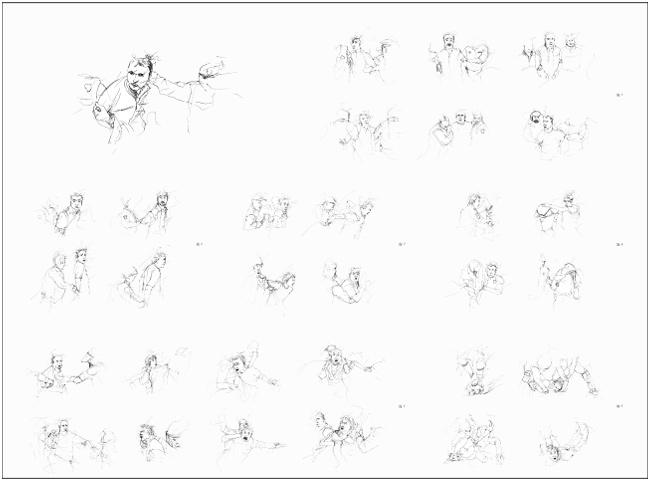 Sophie Dvorak
Sophie Dvorak
I: Agree / II: Demonstrate / III: Arrest
Drawing / Serigraphy, 70 x 95 cm, 2009-11 (5 / +1ap)
I: Agree / II: Demonstrate / III: Arrest, is a triple serigraphy print that consists of drawings from a various international newspapers depicting the moments of agreements between politicians, demonstrations against these agreements by different communities, and consequently the moments of arresting of the demonstrators. The project indicates the omnipresence of injustice, the normalization of it, and how these consequent processes attract only a momentous attention from us.
Sophie Dvořák takes her motives from the mass media of the daily newspaper. Her drawings have a strongly documentary character. In her presentation boards with the reproduced drawings she unravels the recurring patterns of the propagandized gestures, and their selective and manipulative use, and is thus questioning their claim of truth and their relative perception.
ŞAKIR GÖKÇEBAĞ
Gökçebağ builds installations with inexpensive objects of everyday life within the space of art, creating irony and optical illusion, by detaching possible connotations from the materials and objects and shifting their pre-existing contexts.
On the one hand, the used material and objects surprisingly succeed in communicating effectively through an unknown language, while on the other hand he raises questions about the material and immaterial value of artistic work. Gökçebağ produces a site-specific installation for the Inattentional Blindness project.
As for his photography work, Gökçebağ manipulates objects, creates compositions and photograph them. Although the result image seems like digitally manipulated, he does not retouch the photographs digitally.
BERAT IŞIK
Berat Işık approaches the ideological and vulnerable issues that he faces within the socio-political environment he lives in, with a gentle and humorous touch. The notion of sight is manifested strongly in many of his work. This is very much visible at the selected videos, for Inattentional Blindness. In Dancer in the Dark, the viewer is faced with their own disregard of the other, while at Eyes Wide Shut problematizing the position of the pacified individuals through the ruling systems and their media apparatuses. At Apocalypse Please, we encounter a large Eastern Anatolian family, giving up their senses of sight, as a solution to be able to survive and remain sane within the conditions they live.
CLAUDIA LARCHER
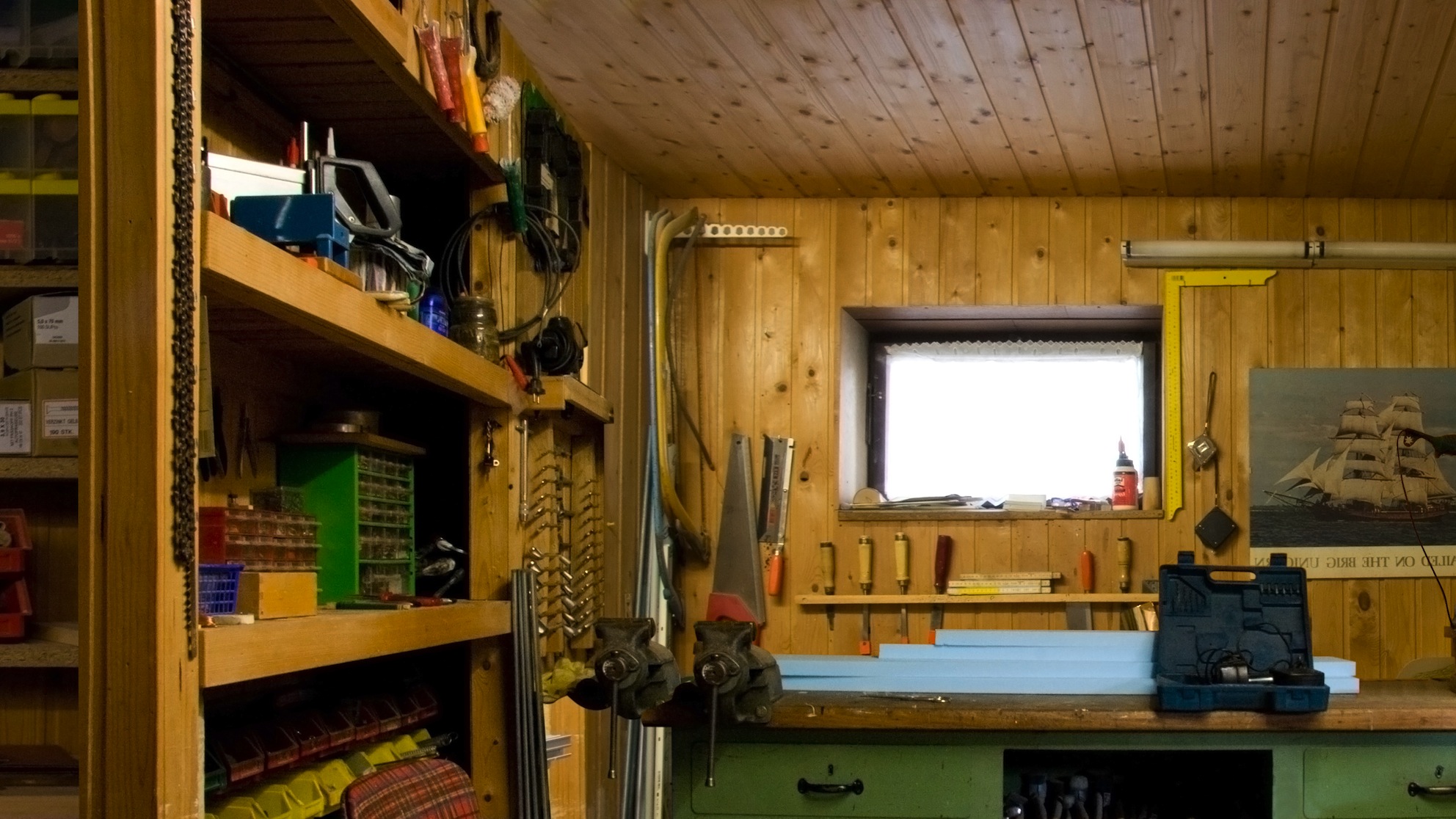
Claudia Larcher
Heim
Video animation, HD, 16:9, stereo, 12 min, photomontage, 60 x120 cm collage objects, 35 x 29 x 8 cm, 11’:40”, 2008
At her work Heim Claudia Larcher brings together a sequence of shots into a form of video animation, exploring a house from attic to cellar. By using this technique uniquely developed by herself, Larcher assembles images into a seemingly endless pan shot and through that she successfully creates a new dimension between photography and cinema, shifting our spatial perception.
While the animation shows a peaceful family house, the audio track at the background creates a continuous tension accompanying the series of endless images.
The digital photomontage print with the same title Heim, was produced from the same photographic material that was collected for the film.
BERND OPPL

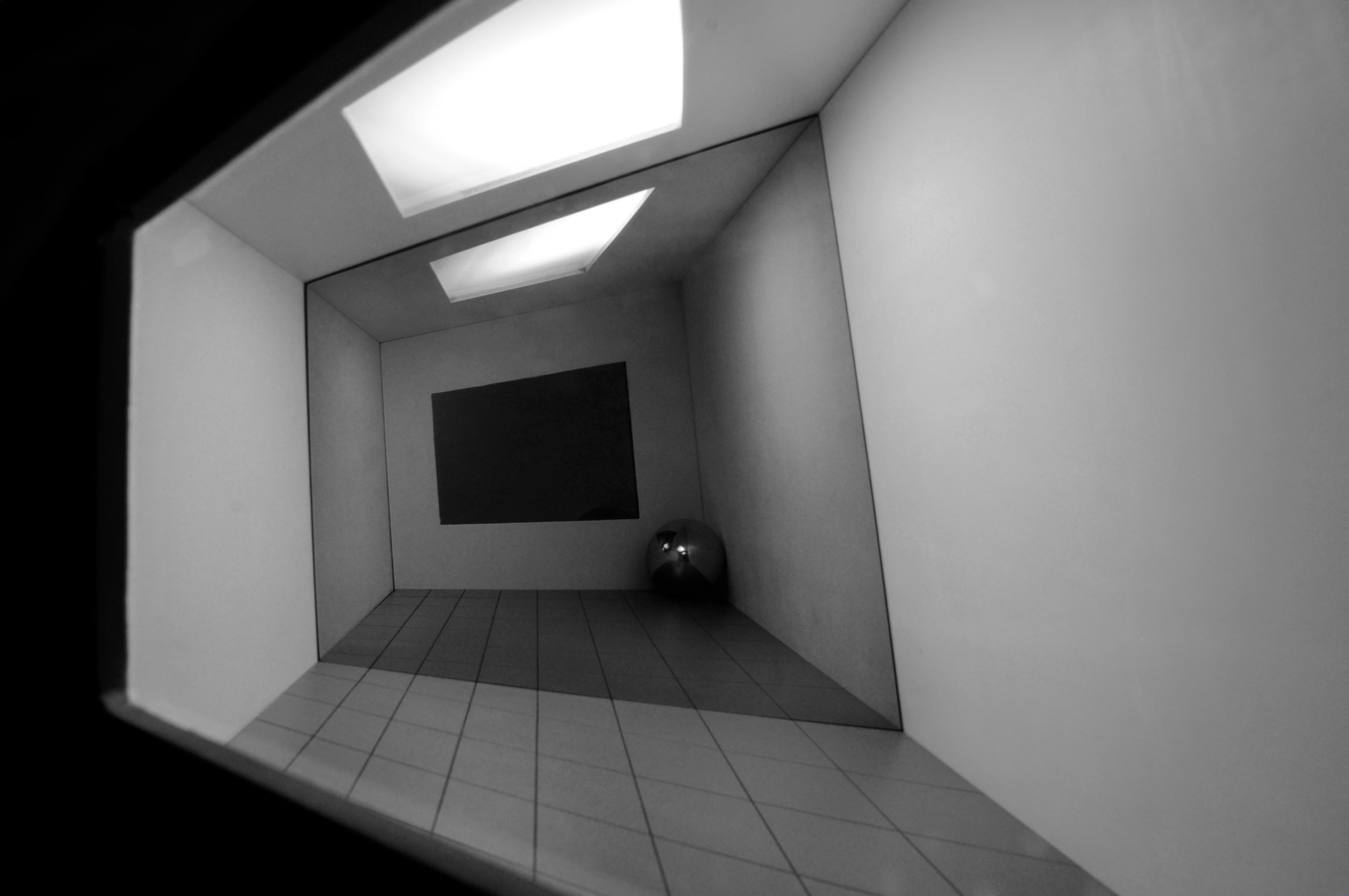
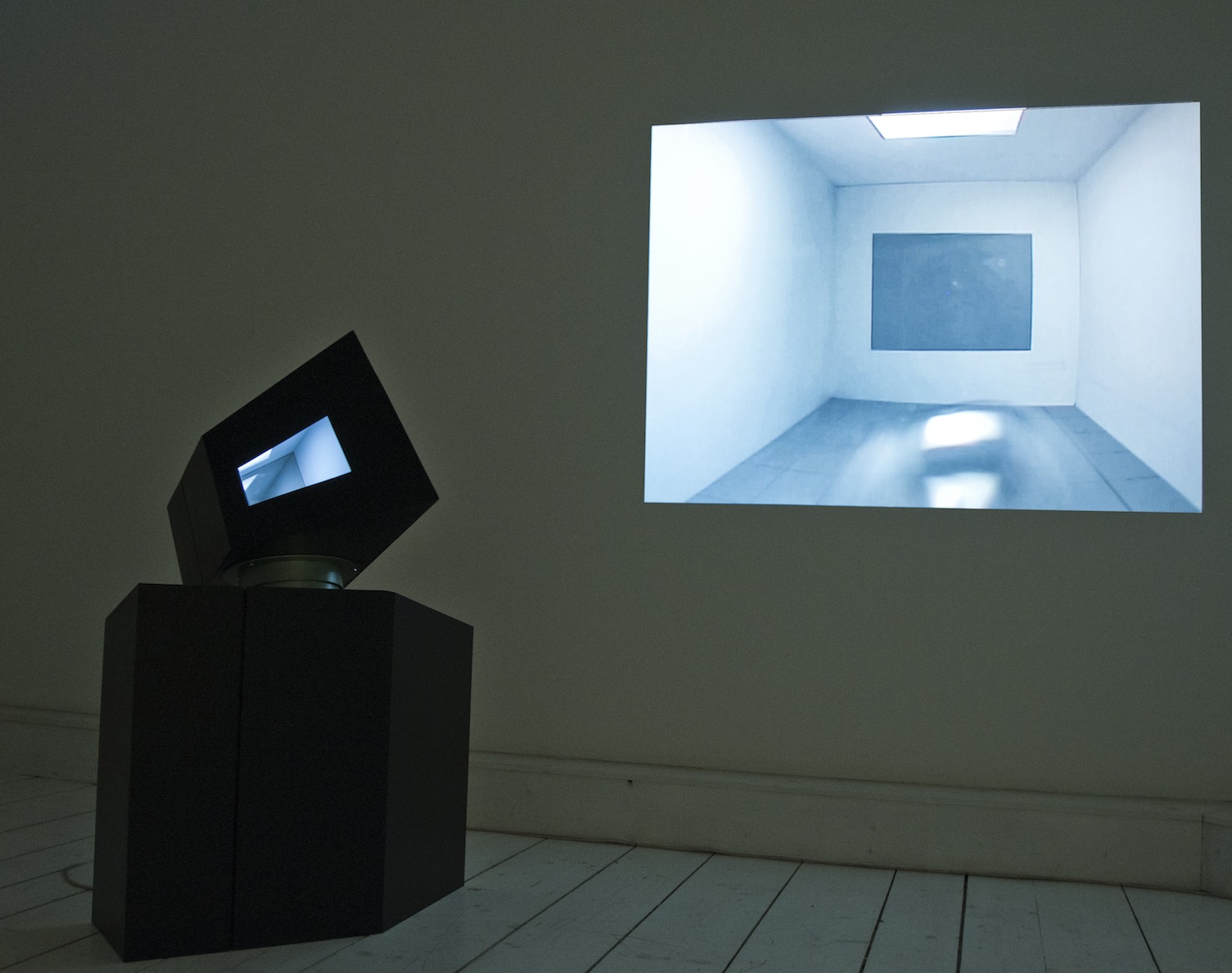 Bernd Oppl
Bernd Oppl
Angular Field
HD Video, 16:9, colour/silent, 6:00 Min, 2013
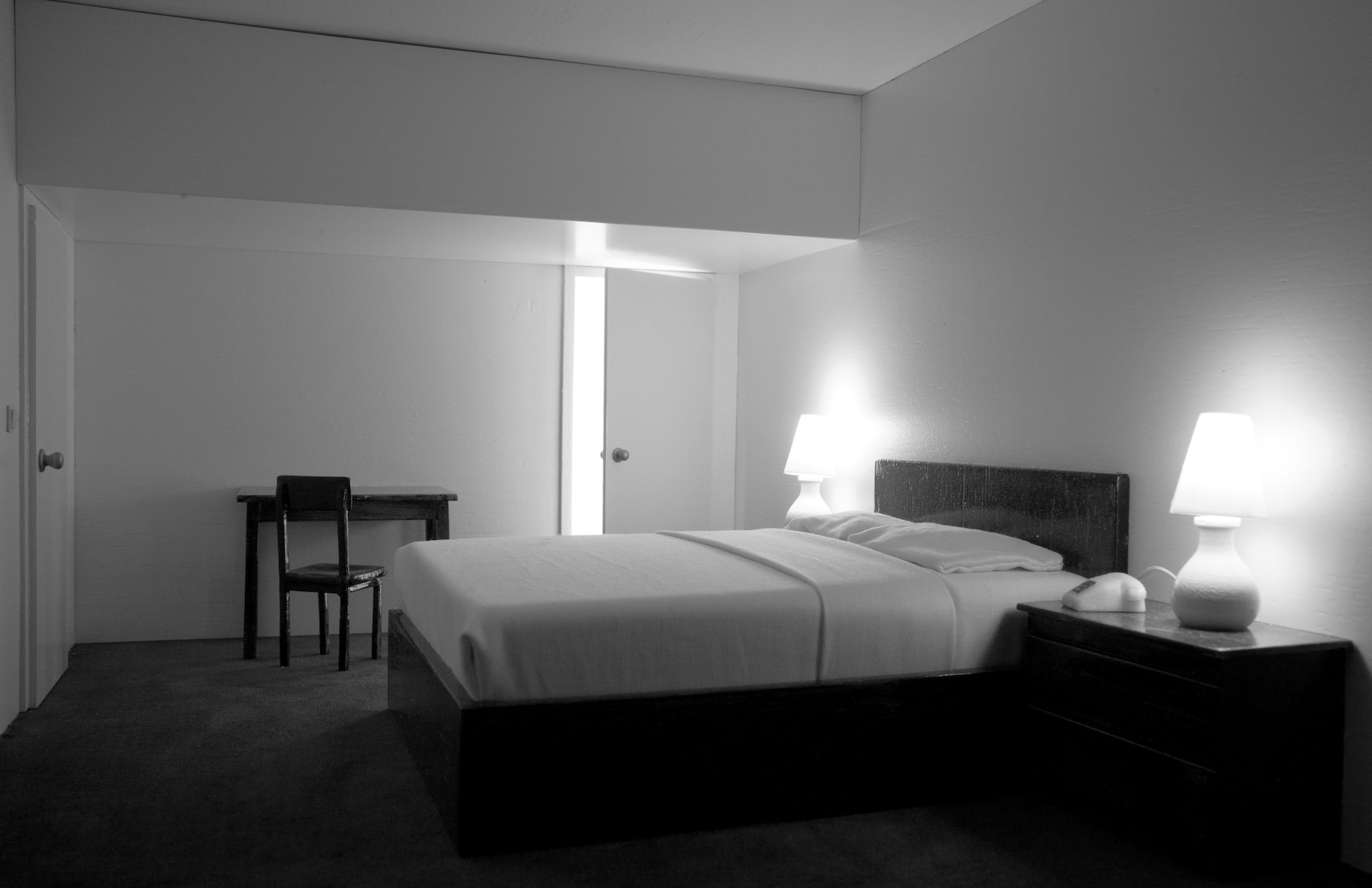
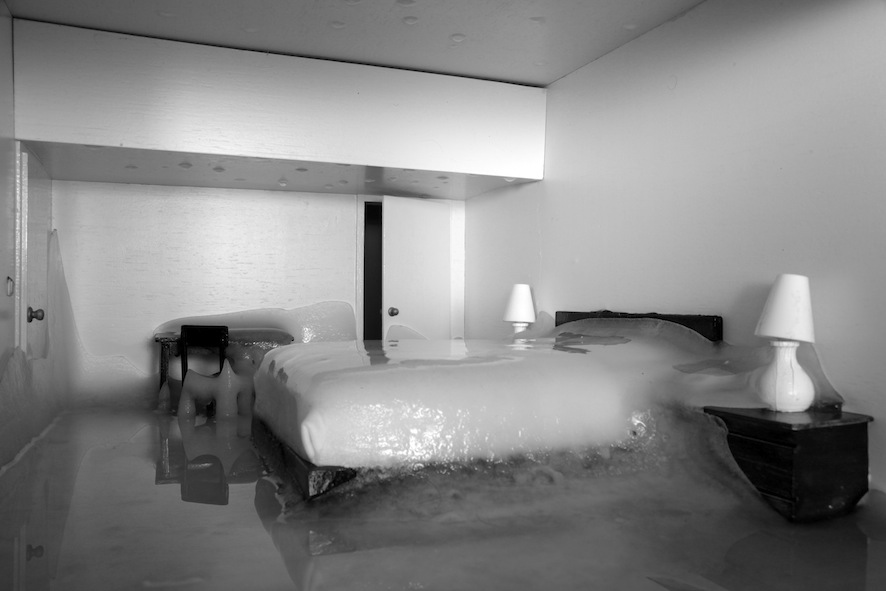
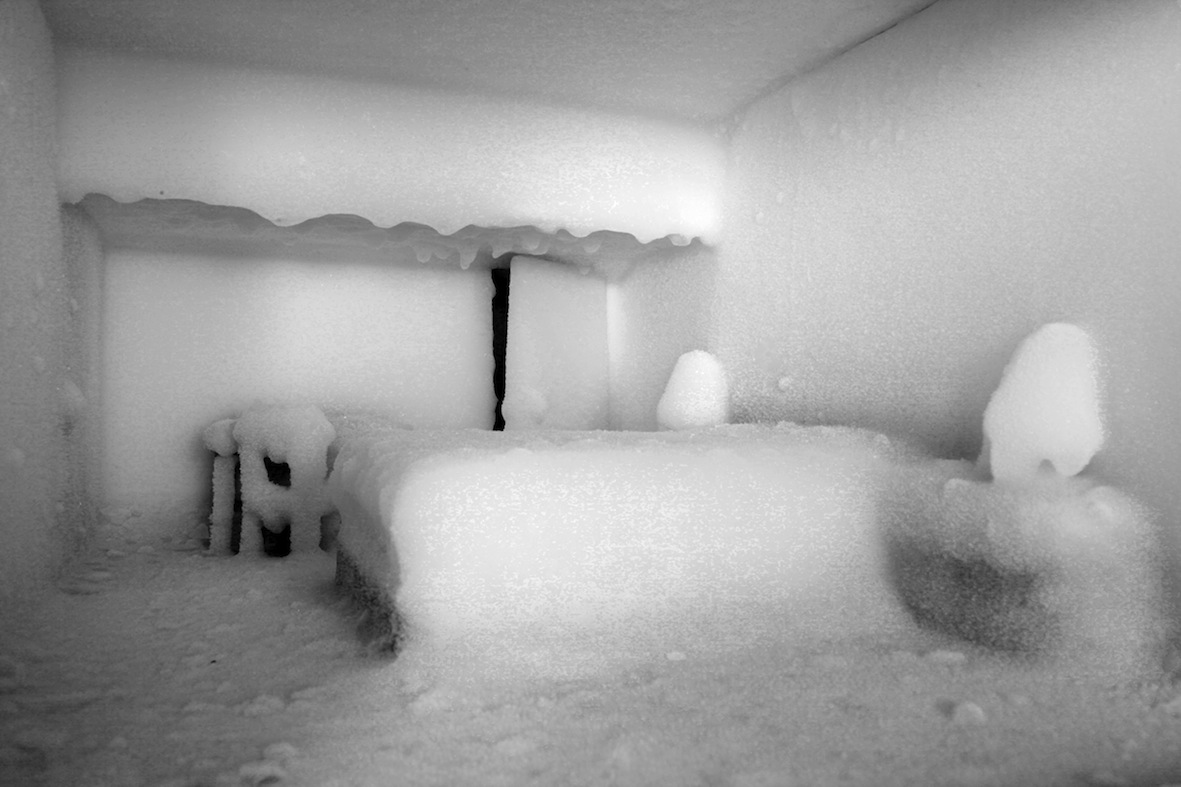 Bernd Oppl
Bernd Oppl
Hotel Room
MDF, Video 26x35x25,5 cm, 2012
In Angular Field, Bernd Oppl builds an experimental arrangement of a space, applying one of the most frequently used techniques for optical illusions by creating distortion in space conditions. This distortion is directly used for experiments researching the phenomenon inattentional blindness.
While the dimensions of the encountered space are distorted, our memory of previous spatial experiences helps us perceive the space in usual dimensions. This effect easily creates the illusion at the eye of the viewer. However, Oppl goes further, and through his rotating architectural model with a camera attached inside, he creates another level of optical illusion.
The space object is used both as a backdrop, as well as an autonomous structure. Oppl is interested in the interrelations between the autonomous object and the virtual space created from within. The videos Delay Room and Sick Building follow a similar kind of path, crating a spatial illusion through the videos produced reflecting the indoor space of the rotated architectural modals. Going a step further at the Hotel Room, he challenges the perception of the viewer, by subtly and very slowly freezing the projected room.
(Bernd Oppl: Work & Images courtesy: Gallery Krinzinger)
LIDDY SCHEFFKNECHT
A game of soccer is reduced to the shadows of the players on the field. All that remains of the game is the cameras pan, the field with its defining lines and the moving shadows of the players.
Liddy Scheffknecht uses sunlight as a plastic material; incident light creates an unusual speckle in the room, which is cast into a specific shape by silhouettes attached to the window. This results in an immaterial image of light, or shadow, which moves through the room – propelled by the earth’s rotation – and chances its shape, size, and proportion. At one particular moment during the day, the sculpted light combines itself with an object, in this case with the plant, in the room. What emerges is an illusion of unity of the object and the projection of light or shadow. The photograph Crop captures exactly this moment of reunion.
AYLİN TEKİNER
Artist and activist Aylin Tekiner focuses on the information that is produced through the various political manipulation technics and means as well as their reflection on the collective perception fields. She opens up discussions about the embedded and manipulated political history of the geography that she lives on, by using the tools of language.
In her texts, she uses the aesthetics of story telling, official history, college books as well as news reports, considering them as areas where language modifies society via manipulating collective histories. By deconstructing the available information and using the tools of the existing power mechanisms, she attempts at turning the invisible and forgotten visible.
At the trilogy Scent/Sorrow/Exiled, specifically produced for the Inattentional Blindness exhibition project, Tekiner focuses on three massacres that have taken place at the recent history: Halepce, Roboski and Sivas. While examining on the fresh memories of these unfortunate incidents, Tekiner uses the monitors as digital books, reconstructing and deconstructing the historical facts from various approaches.
ARTIST BIOGRAPHIES
Sophie Dvořák was born in Vienna in 1978. She studied at the Academy of Fine Arts Vienna and the Glasgow School of Arts. After her Diploma in 2008 she has lived and worked, amongst other places, in the Netherlands, Argentina and China.
Sophie Dvořák deals with visual representation of concepts of knowledge and information. Of special interest to her are cartography and data visualization / information graphics, but she also works with images from the mass media or encyclopaedias, and even science-fiction comics. Most of her work is based on an archival idea of gathering, collecting and comparing, but also deconstruction and reduction are recurring elements. The results are abstract, fictional depictions of worlds and knowledge, images that could be read as interpretations of history, politics and spatial relationships. Dvořák primarily works on paper – collages, drawings and prints in small editions. Her graphic work is part of the Collections of the City of Vienna, the Graphic Collection of the Academy of Fine Arts in Vienna, and The Austrian Federal Government’s Artothèque. Currently she lives and works in Vienna, Austria.
Sakir Gökçebağ born in in Denizli in 1965, combines puns and creation and produces astounding objects, sculptures, collages, and photographs. For this purpose he finds simple media and banal appliances of daily use such as brooms, shoes, umbrellas, cutlery, wire, and paper rolls. He shares his preference for simple, cheap things, as much as his pronounced sense of humour and playfulness.
He graduated from the Faculty of Fine Art at Marmara University in 1987, where he also completed his master’s (1990) and doctoral degrees (1994). He won the second prize in the State Painting and Sculpture Competition in Ankara in 1991. In the same year, he received a scholarship from the Austrian government for Summer Academy in Salzburg in 1991. After that, Gökçebağ recived another scholarship from DAAD and went to Düsseldorf Academy between 1995 and 1996. He was awarded Markus Lüpertz Prize by Düsseldorf Academy in 1996. Gökçebağ has had many solo exhibitions and participated in numerous group exhibitions in Turkey and abroad. He awarded George Macuinas Prize in 2012. Currently he lives and works in Hamburg.
Berat Işık, an artist of Kurdish origin, was born in 1976 in Diyarbakır, in the southeastern region of Turkey, where a large Kurdish community is based. After studying painting at the University of Dicle, and sitting the national exam, he started work as a drawing teacher in the secondary schools of his region, alongside his artistic activity. He now lives and works in his hometown. Berat Işık’s videos are often underpinned with black humour, questioning the influence of popular culture on the collective memory. He views contemporary society with a critical eye and highlights the sensitive position in which the Kurdish minority in Turkey finds itself. As though refusing the hegemony of the industry that imposes an aesthetic that is too picture-perfect, Işık does not correct certain technical “flaws” in his videos. These elements intentionally left on the tapes highlight the resistance that the artist manifests against the micro managing of culture, as well as the urgency and necessity with which these works are produced.
Claudia Larcher is a Visual Artist born in 1979 in Bregenz / Austria, who lives and works in Vienna / Austria. Larcher’s artistic work mainly deals with architecture. She is interested in places that are connected to history, familiarity and memory, questioning the meaning of “home“ and “identity“. The last years she was working in the field of (photo) collage, (site-specific) video animation and mixed media installation. She is doing live visuals in performances and for live concerts, also co-curating the exhibitions of artist collective ”Plinque“. Larcher studied transmedia art at the University of Applied Arts in Vienna attending the masterclasses of sound artist Bernhard Leitner from 2001 to 2005 and sculptor Erwin Wurm until 2008. In 2008 she won the “Kunsthalle Wien Award” for her animation HEIM followed by a solo exhibition at “Kunsthalle Wien” Vienna. Since then Claudia Larchers work was shown in several solo and group shows for instance in Tokyo Wonder Site in Japan, Slought Foundation in Philadelphia or Centre Pompidou in Paris.
Bernd Oppl was born in Innsbruck, Austria, in 1980, lives and works in Vienna, Austria. Has studied fine arts (painting and graphic arts) from 1998 to 2007 under Ursula Hübner at Kunstuniversität Linz (Austria) and, since 2008, fine arts under Dorit Margreiter (video and video installation) at the Academy of Fine Arts Vienna. Awards / Grants – RLB Art Price, Künstbrücke, RLB Tirol AG, Innsbruck (2012), Sponsorship Award for Contemporary Art of the state of Tyrol (2008), Working grant of the Federal Ministry of Education, Science and Kulture (2008/09).
Liddy Scheffknecht, born 1980 in Dornbirn, Austria, is a visual artist living and working in Vienna. She graduated from the University of Applied Arts in Vienna and the École Nationale Supérieure des Beaux-Arts in Paris. She participated in numerous group exhibitions including the Sinop Biennale in Turkey 2012, the Moscow Biennale for Young Art 2010 and the Biennale of Young Artists of Europe and the Mediterranean 2009. Solo exhibitions were hosted at the Kunsthaus Graz and the Ex-Garage in Maribor 2012 and the gallery Georg Kargl Fine Arts in Vienna 2011. In 2010 she received the Startstipendium of the BMUKK. Her work can be found in a number of private and public collections including the Albertina, the Ursula Blickle Archiv and the Museum Kitzbühel . Liddy Scheffknecht works in different medias like photography, video, installation and sculpture. In her work she concentrates on the subject of time and space, standstill and movement and the borders of static and moving image.
Aylin Tekiner was born in Nevsehir, Turkey in 1978. She undertook her BA and MA at Hacettepe University Fine Arts, Sculpture Department. In 2008 she finished her Ph.D. at Ankara University, Institute of Educational Sciences, Cultural Fundamentals of Education Department. Her book “Ataturk Statues Cult, Esthetics, and Politics” evolved from her PhD thesis and was published by Iletisim Yayinlari in 2010. Aylin has had solo shows and group exhibitions in Turkey and New York. She currently teaches a course, New Media, Art, and Activism, at Long Island University, Brooklyn New York. She is a member of Collective Memory Platform, which was formed by the families of 28 victims of the political murders in modern Turkey. Working as an artist and activist, Tekiner is based in NY.
PRESS
ARTICLE BY PINAR ÖĞRENCİ: “İSTEM DIŞI KÖRLÜK” SERGİSİ ÜZERİNE (TURKISH)
26 Jan 2014 – T24.com – ARTICLE BY AYSEL SAĞIR: EN MAHREM, EN KIRILGAN YERLERİMİZDEN YAKALANIYORUZ (TURKISH)
20.02.2014 – ISTANBUL ART NEWS –ARTICLE BY MUSTAFA DOĞULU: GÖRÜNENİN GÖLGESİNDEKI KÖRLÜK (TURKISH)
01.02.2014 – AHMET RÜSTEM.BLOGSPOT – EXHIBITION NOTES: AHMET RÜSTEM (TURKISH)
05.01.2014 – ART AGENDA: INATTENTIONAL BLINDNESS (PRESS RELEASE)


